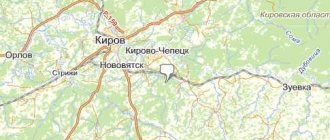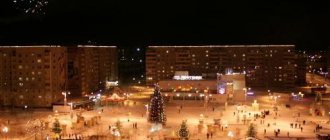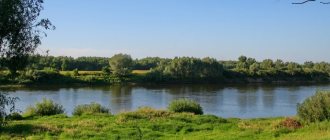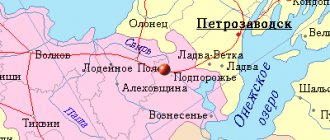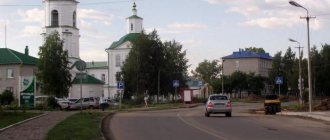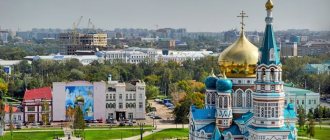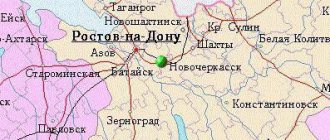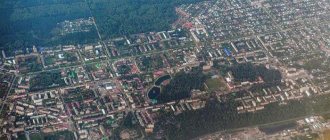Holiday calendar, signs, dates and events for every day of the year - folk calendar, Orthodox calendar, church calendar, eastern calendar, astrological calendar, lunar calendar, industrial calendar, as well as state and professional holidays, including significant World and International holidays and public holidays , folk holidays and omens, and other equally interesting and unusual holidays, dates and events of the year, zodiac signs, dream books and much more.
Calendar for 2022
| January | ||||||
| Mon | W | Wed | Thu | Fri | Sat | Sun |
| February | ||||||
| Mon | W | Wed | Thu | Fri | Sat | Sun |
| March | ||||||
| Mon | W | Wed | Thu | Fri | Sat | Sun |
| April | ||||||
| Mon | W | Wed | Thu | Fri | Sat | Sun |
| May | ||||||
| Mon | W | Wed | Thu | Fri | Sat | Sun |
| 1 | ||||||
| 2 | 3 | 4 | 5 | 6 | 7 | 8 |
| 9 | 10 | 11 | 12 | 13 | 14 | 15 |
| 16 | 17 | 18 | 19 | 20 | 21 | 22 |
| 23 | 24 | 25 | 26 | 27 | 28 | 29 |
| 30 | 31 | |||||
| June | ||||||
| Mon | W | Wed | Thu | Fri | Sat | Sun |
| 1 | 2 | 3 | 4 | 5 | ||
| 6 | 7 | 8 | 9 | 10 | 11 | 12 |
| 13 | 14 | 15 | 16 | 17 | 18 | 19 |
| 20 | 21 | 22 | 23 | 24 | 25 | 26 |
| 27 | 28 | 29 | 30 | |||
| July | ||||||
| Mon | W | Wed | Thu | Fri | Sat | Sun |
| 1 | 2 | 3 | ||||
| 4 | 5 | 6 | 7 | 8 | 9 | 10 |
| 11 | 12 | 13 | 14 | 15 | 16 | 17 |
| 18 | 19 | 20 | 21 | 22 | 23 | 24 |
| 25 | 26 | 27 | 28 | 29 | 30 | 31 |
| August | ||||||
| Mon | W | Wed | Thu | Fri | Sat | Sun |
| 1 | 2 | 3 | 4 | 5 | 6 | 7 |
| 8 | 9 | 10 | 11 | 12 | 13 | 14 |
| 15 | 16 | 17 | 18 | 19 | 20 | 21 |
| 22 | 23 | 24 | 25 | 26 | 27 | 28 |
| 29 | 30 | 31 | ||||
| September | ||||||
| Mon | W | Wed | Thu | Fri | Sat | Sun |
| 1 | 2 | 3 | 4 | |||
| 5 | 6 | 7 | 8 | 9 | 10 | 11 |
| 12 | 13 | 14 | 15 | 16 | 17 | 18 |
| 19 | 20 | 21 | 22 | 23 | 24 | 25 |
| 26 | 27 | 28 | 29 | 30 | ||
| October | ||||||
| Mon | W | Wed | Thu | Fri | Sat | Sun |
| 1 | 2 | |||||
| 3 | 4 | 5 | 6 | 7 | 8 | 9 |
| 10 | 11 | 12 | 13 | 14 | 15 | 16 |
| 17 | 18 | 19 | 20 | 21 | 22 | 23 |
| 24 | 25 | 26 | 27 | 28 | 29 | 30 |
| 31 | ||||||
| November | ||||||
| Mon | W | Wed | Thu | Fri | Sat | Sun |
| 1 | 2 | 3 | 4 | 5 | 6 | |
| 7 | 8 | 9 | 10 | 11 | 12 | 13 |
| 14 | 15 | 16 | 17 | 18 | 19 | 20 |
| 21 | 22 | 23 | 24 | 25 | 26 | 27 |
| 28 | 29 | 30 | ||||
| December | ||||||
| Mon | W | Wed | Thu | Fri | Sat | Sun |
| 1 | 2 | 3 | 4 | |||
| 5 | 6 | 7 | 8 | 9 | 10 | 11 |
| 12 | 13 | 14 | 15 | 16 | 17 | 18 |
| 19 | 20 | 21 | 22 | 23 | 24 | 25 |
| 26 | 27 | 28 | 29 | 30 | ||
Designations in the calendar: X - holidays; X—weekends; X - reduced working day by 1 hour;
Brief history of the Yaroslavl region
From the most ancient times, even before the beginning of the 9th century, the territory was inhabited by tribes who lived by gathering and hunting. They carried different cultures and worshiped different gods. The arrival of the Slavic peoples gave impetus to the emergence of the first signs of statehood.
In the 8th century, the first cities began to appear, some of which have survived to this day. They have grown and become more beautiful and modern. The oldest such representative is the city of Rostov. The first mention of it appeared in chronicles in 862. At that time it was a place where taxes were collected. Then the settlement began to grow, becoming a princely center.
A little later, in 1010 - 1152, the famous historical cities of Yaroslavl and Rybinsk , Uglich and Pereslavl appeared. The development of cities occurs simultaneously with the spread and propaganda of the Christian faith.
At the beginning of the 13th century, the entire Yaroslavl was burned to the ground by the Mongol-Tatars. But the residents did not submit to the new government and fought to the end for their freedom.
There is no exact date, but in the 14th-15th centuries the Yaroslavl region acquired the main shrine - the Tolga Icon of the Mother of God. She, one of the oldest icons in the world, is still kept in the Holy Vvedensky Monastery near Tolgsk.
In the 15th century, the Yaroslavl region came under the jurisdiction of the Moscow Principality and grew rapidly thanks to trade with foreign countries.
The 17th century is designated as the "Golden Age" for the region. It was during this period that many unique buildings were built, which currently have great historical value.
Over the next two centuries, industries actively developed: paint and textiles, oil refineries, livestock breeding and agriculture. The first railway appeared, connecting Yaroslavl with St. Petersburg, Moscow, Vologda and Kostroma.
As an administrative unit, the Yaroslavl region was created in 1936. The entire territory of the region occupies more than 36 thousand sq. km, where more than 1.312 million people live.
0%
Holiday calendar, dates and events for every day of the year
All state and professional holidays of Russia, including significant World and International holidays, and other equally interesting holidays, dates and events of the year... Holiday calendar for every day; Russian production calendar with holidays.
• What holiday is today and tomorrow, dates and events...
A little history
Yaroslavl is one of the oldest cities in Russia. There are several hypotheses for its foundation. Many of them proceed from the assumption that Yaroslavl was founded in 1010 by the Kyiv prince Yaroslav the Wise as a fortress located on the right bank of the Volga. Previously, there was an ancient Russian settlement in that place called “Bear Corner”. According to legend, Yaroslav surprised local residents by killing a bear, which they considered a sacred beast. The legend of this fight was subsequently reflected in the city’s coat of arms.
Church calendar for every day
The church calendar is a time counting system used by the Orthodox Church to determine the sequence of church holidays and fasts in the annual cycle, as well as the corresponding services. Also the name of printed publications of various types, containing (in addition to general calendar functionality) elements of the monthly calendar and other materials of a liturgical and menological nature adapted to a specific year. The Church calendar contains two annual circles of events... Church calendar
Yaroslavl on the map of Russia
Yaroslavl belongs to the Central Federal District of Russia. It is located on the East European Plain, in its central part. The city is located on both banks of the Volga, in the place where the Kotorosl River flows into it. It is separated from the Russian capital by 282 km, and from St. Petersburg by almost 800 km. Yaroslavl is located northeast of Moscow, and southeast of the city on the Neva.
Yaroslavl is located in the same time zone as Moscow.
The city covers an area of just over 205 km2. Its average height is 100 m above sea level.
Yaroslavl is a transport hub from which roads and railway lines diverge in the direction of the Russian capital, Rybinsk, Vologda, Kostroma, Kirov, Ivanovo. The city also has an airport and a river port.
Yaroslavl is the third largest city in the Central Federal District of the Russian Federation by population. Only Moscow and Voronezh are ahead of him.
Administratively, Yaroslavl is divided into six districts: Leninsky, Dzerzhinsky, Kirovsky, Zavolzhsky, Krasnoperekopsky, Frunzensky.
Russian folk calendar for every day
Season: Winter - December, January, February.
Season: Spring - March, April, May.
Time of year: Summer - June, July, August.
Season: Autumn - September, October, November.
Yaroslavl
The most ancient settlement on the territory of present-day Yaroslavl, dating back to the 5th–3rd millennium BC, was located on the left bank of the Volga, opposite the place where the Volga and the Kotorosl River merge.
In the first millennium, Finno-Ugric tribes lived in this territory, and in the ninth century, during the formation of Kievan Rus, Slavs from the surrounding lands came and stayed here, fleeing princely and boyar claims. To strengthen power in the distant Zalessk region, Prince Vladimir the Red Sun sends his sons there, giving each of them ownership of a city. Yaroslav the Wise was owed Rostov, which he ruled from 988 to 1010.
Temple of John Chrysostom
© vasilets
The history of the founding of Yaroslavl does not have reliable sources and everything that has to do with the initial period of the city’s foundation is based on assumptions, legends and conjectures. But, nevertheless, Yaroslav the Wise is considered the founder of the ancient city. Legends tell that once Yaroslav, who at that time ruled the Rostov land, while traveling around his possessions, met a pagan village. This place was called Bear's Corner, its inhabitants were engaged not only in fishing, hunting and cattle breeding, but also robbed ships passing by the village. To Yaroslav’s offer to the pagans to accept Christianity, which had reigned in Rus' for twelve years, the local residents refused, but vowed to continue to live in peace without robbery, and even to pay tribute. However, Yaroslav nevertheless decided to pacify the rebellious pagans and convert them to the Christian faith, for which he soon returned to Bear Corner, bringing with him the clergy. The pagans, resisting, released a fierce bear and ferocious dogs against the prince, but to their great surprise, the dogs did not touch anyone, and Yaroslav defeated the huge bear. The broken pagans humbled themselves, and the prince erected a cross at the site of the battle and laid the stone of the future temple of Elijah the prophet, since this event happened on Elijah’s day in 1010.
At the beginning of the thirteenth century, Yaroslavl was already quite an influential and powerful city on the Volga, largely due to its favorable geographical location. There was active construction of churches in the city; icon painters painted icons for them and painted their interiors. In the thirteenth century, “Our Lady of Oranta - Great Panagia” and “Savior” were created - the greatest examples of icon painting of ancient Rus'. Yaroslavl grew, and unfortified settlements began to appear around it.
Yaroslavl flourished until 1238, until the invasion of the Tatar-Mongol yoke. During the capture of Batu's troops, all the townspeople were killed, and the city itself was burned and destroyed. Only after some time did life begin to return to the city, houses and churches were rebuilt.
The fourteenth century is considered the darkest period for the history of the city, under the rule of the sons of Fyodor the Black. The endless internecine wars that were unleashed exhausted the local population, and the city was subjected to constant looting. In 1364, a plague epidemic raged in Yaroslavl, killing many residents.
By the end of the fifteenth century, the Yaroslavl princes became not autocrats, but only governors, when the Yaroslavl principality became part of the Moscow principality.
© Irina
At the beginning of the sixteenth century, there was a big fire in Yaroslavl, most of the city burned down, and the Assumption Cathedral collapsed. As a result of the fire, the buildings of the Spassky Monastery were also severely damaged. But the city was rebuilt again, and thanks to the Moscow princes who patronized it, grandiose construction was carried out in Yaroslavl throughout the sixteenth century.
The Troubles that took hold of the entire country in the seventeenth century also affected Yaroslavl, but the city quickly recovered from its consequences and continued its cultural and economic prosperity. Located at the crossroads of land and water trade routes, Yaroslavl became increasingly influential. The merchant class was actively developing, in whose hands all foreign trade with the West and East was concentrated.
Only with the accession of Peter I to the throne and his reforms, which were actively implemented, Yaroslavl gradually lost its status as the second most important city in the Russian state. Peter I's refusal to trade through Arkhangelsk greatly weakened the economic position of Yaroslavl, which subsequently led to the ruin of many merchant dynasties. However, following the trade decline, an era of rapid industrial development came, and manufactories, handicrafts, and artels began to appear.
The first digital school in Yaroslavl was opened in 1718, and in 1748 the Yaroslavl Theological Seminary was established at the Spassky Monastery. The cultural life of Yaroslavl also developed - in 1750, Fyodor Volkov organized the first Russian theater, which was publicly accessible to all segments of the population. The theater had enormous success and fame and was soon moved to St. Petersburg.
Today Yaroslavl is a unique monument of urban planning; the historical part of the city was included in the UNESCO List in 2005.
Airport
There are three airports in Yaroslavl, but only one of them - Tunosha - has international status and is used for air transportation of passengers and cargo. The other two airports - Karachikha and Levtsovo - are mainly used for entertaining and educational events related to small aviation (parachute jumping, air excursions, learning to fly on “corn trucks”, etc.). Karachiha Airport is famous for its graduates, including the first female cosmonaut V. Tereshkova.
The Tunosh air harbor is located outside of Yaroslavl, 17 kilometers from its center in a south-easterly direction. Mainly Russian airlines serve here, making regular and charter flights to Russian cities and neighboring countries. The most popular routes are Moscow, St. Petersburg, Yekaterinburg, Kazan, Simferopol. Special buses go to the air harbor from Yaroslavl (Volgogradskaya St.).
Bus stations
The central bus station of Yaroslavl is located at Moskovsky Prospekt, 80A. From here buses depart and transit on suburban, intraregional and interregional (in the Central Federal District) directions to cities and small towns. On certain days there are flights to neighboring regions. There are bus stations in different parts of the city where buses leaving from the central bus stop.
Among interregional and regional routes, routes to Moscow, Cherepovets, Kostroma, Vologda, Ivanovo, Vladimir, Kazan, Ufa, Galich, Yoshkar-Ola, Kovrov, etc. are popular.
Railway stations
There are two railway stations in Yaroslavl - “Glavny” (Yaroslavl-Glavny Square, 1a) and “Moskovsky” (Podvoisky Square, 1). From the central railway station "Vokzal" trains depart daily to Moscow, St. Petersburg, Vorkuta, Cherepovets, Ivanovo, Kostroma, Arkhangelsk, Abakan, Adler and Chita. On certain days, trains run to a number of other Russian cities, including Severodvinsk, Labytnangi, Sosnogorsk, Novorossiysk, Ufa, Samara, Yekaterinburg, Vologda and others.
Most trains depart from the Moskovsky station on suburban and regional routes. Trains transiting through Yaroslavl to some of the outlying cities listed above also stop here. On a regular basis, trains and electric trains depart from Moskovsky station to Vladivostok.
Road transport
Yaroslavl is connected to many Russian cities by the following highways:
- M8 “Kholmogory” is a federal highway. It starts in Moscow, passes through Yaroslavl and then continues to Vologda and Arkhangelsk. From the M8 there are many branches to intermediate cities and small settlements - Kostroma, Severodvinsk, Strunino, Cherepovets, etc. The road is also part of the E115 - the European route from Moscow to Krasnodar Novorossiysk.
- P151 is a regional highway to Rybinsk, Tutaev, the villages of Konstantinovsky and Pesochnoe.
- R79 - regional road to Ivanovo.


